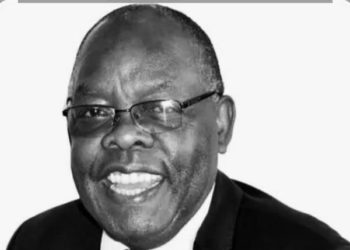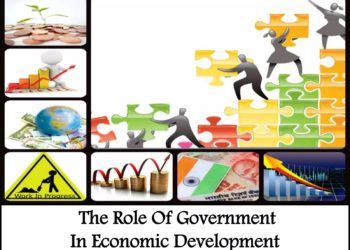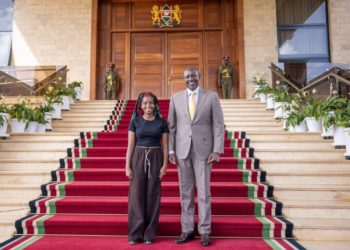In a country where government projects often remain incomplete or exist only on paper, one Kenyan citizen has taken it upon himself to investigate and expose the discrepancies between official statements and on-the-ground realities. Morara Kebaso, a furniture businessman turned civic educator, has spent the last two months traversing Kenya to audit government-launched projects, uncovering a pattern of unfulfilled promises and questionable spending.
Kebaso’s journey began with a simple observation: many Kenyans, particularly in rural areas, lack awareness about how government projects directly impact their lives. “There is 70% of the country that is politically illiterate,” Kebaso told Spice FM in a recent interview. “They basically don’t have an idea of what is going on, and politicians have understood that.”
Armed with official documents, audit reports, and a keen eye for detail, Kebaso has visited numerous sites across Kenya where government projects were supposed to be underway. His findings paint a troubling picture of Kenya’s infrastructure development efforts.
One of Kebaso’s most striking discoveries was in Kabonyo, where a KES 2.5 billion fisheries and aquaculture research center was launched by President William Ruto in October 2023. “I went to see whether the project is there, whether there’s some works that have begun, whether contractors are on site,” Kebaso explained. “Unfortunately, I found children playing and nothing but the plaque which the president used to launch the institute, which was looking like an abandoned grave.”
This pattern of “ghost projects” appears to be widespread. In Eldoret, Kebaso investigated the Kipkaren water treatment project, launched seven years ago with a budget of KES 1.85 billion. Despite KES 767 million already paid to the contractor, Kebaso found only “a semblance of structures” and “some pipes on the ground,” with the project completely stalled.
Kebaso’s investigations extend beyond just identifying non-existent projects. He has also uncovered instances of questionable spending and potential mismanagement of funds. In one case, he highlighted a road project where a contractor was paid an additional KES 525 million without clear documentation or explanation.
The scope of Kebaso’s work is extensive. He has documented over 120 projects that require investigation, ranging from stadiums and roads to water supply systems and industrial parks. His efforts have gained traction on social media, particularly on the platform X (formerly Twitter), where he shares his findings and engages with fellow citizens.
Kebaso’s approach combines on-site visits with thorough document analysis. He examines audit reports, debt reports from the treasury, and project documentation to build a comprehensive picture of each project’s status. This methodology has allowed him to identify discrepancies between official statements and the actual state of projects.
One particularly concerning trend Kebaso has noticed is the repeated launching of the same projects. In one instance, he found that President Ruto had launched the same road project twice over a span of five years, with little to no progress made between launches.
The impact of these stalled or non-existent projects on local communities is significant. Kebaso recounted visiting a road in Kandara where residents are “really suffering” due to the poor condition of a twice-launched but unimproved road. “When it’s dry, it’s very dusty. When it’s wet, it’s impassable,” he noted.
Kebaso’s work has not gone unnoticed. Kenyan citizens have begun supporting his efforts, contributing funds for fuel to enable his investigations. “So far, I’ve been able to use four full tanks. A full tank for the vehicle is like KES 18,000,” Kebaso said, indicating the growing grassroots support for his initiative.
Looking ahead, Kebaso plans to formalize his efforts. “I’m thinking of now going into governance, into taking the call of calling for good governance and to abandon my business,” he stated. His vision includes establishing an office, hiring staff, and conducting more in-depth research on government projects.
Kebaso’s work raises important questions about the effectiveness of government spending and the lack of accountability in project implementation. It also highlights the potential for citizen-led initiatives to drive transparency and change in governance.
However, challenges remain. Access to detailed project documentation is often limited, with Kebaso noting that he may need to take legal action to obtain certain records. “I may have to take them to court for the right to information before they give those documents,” he explained, referring to specific project details held by government agencies.
As Kebaso continues his investigations, his work serves as a catalyst for broader civic engagement and a call for greater government accountability. His efforts demonstrate the power of individual initiative in challenging systemic issues and the potential for citizen journalism to reshape the landscape of public sector oversight in Kenya.
The impact of Kebaso’s work extends beyond the immediate exposure of specific project failures. It has the potential to spark a wider movement of civic engagement and government accountability across Kenya. As more citizens become aware of the discrepancies between promised projects and on-the-ground realities, there may be increased pressure on government officials to deliver on their commitments and use public funds more effectively.
Kebaso’s journey from furniture businessman to civic investigator also highlights the untapped potential within civil society to contribute to governance and oversight. His story suggests that with dedication and the right tools, ordinary citizens can play a significant role in holding their government accountable.

















